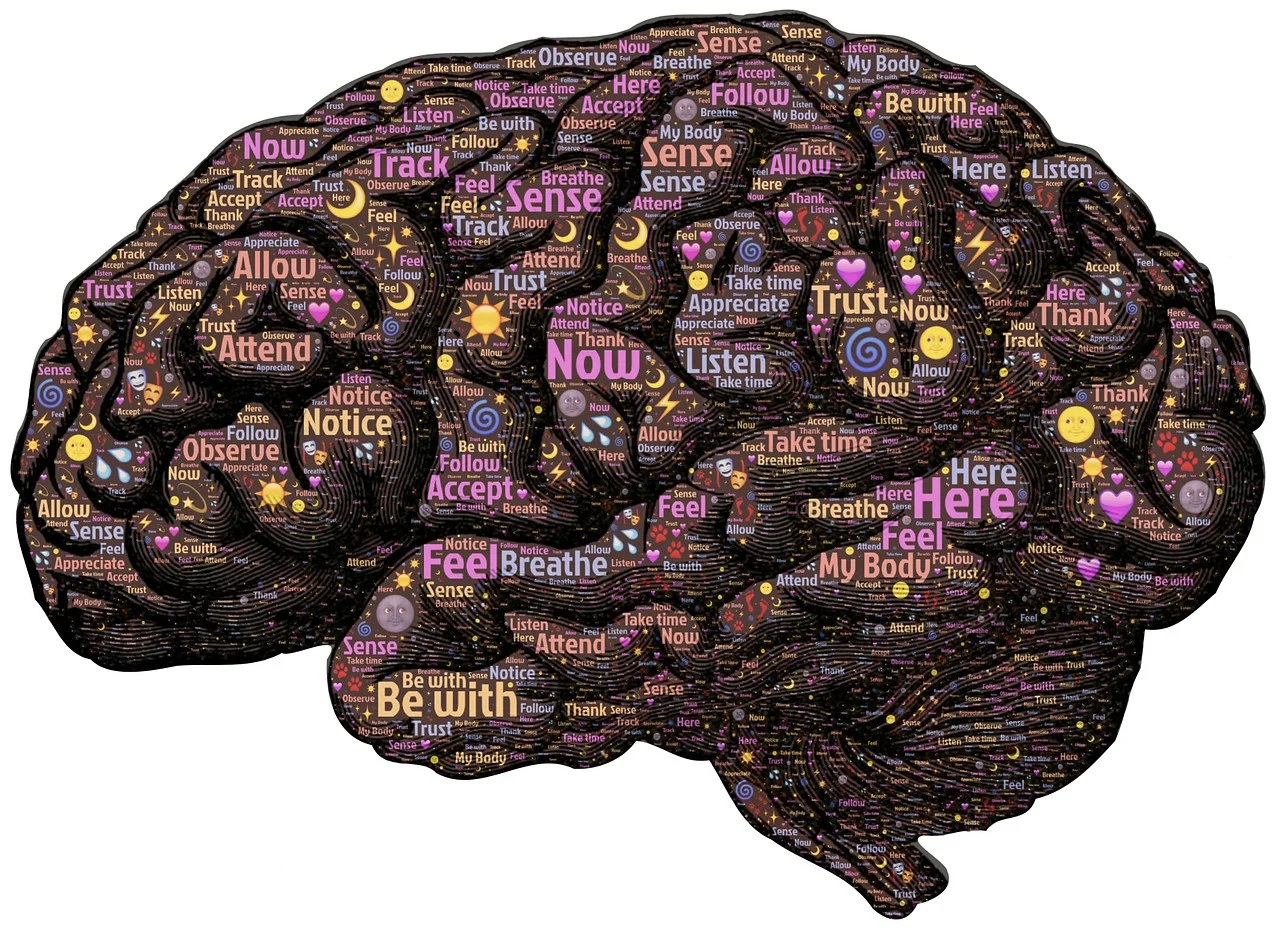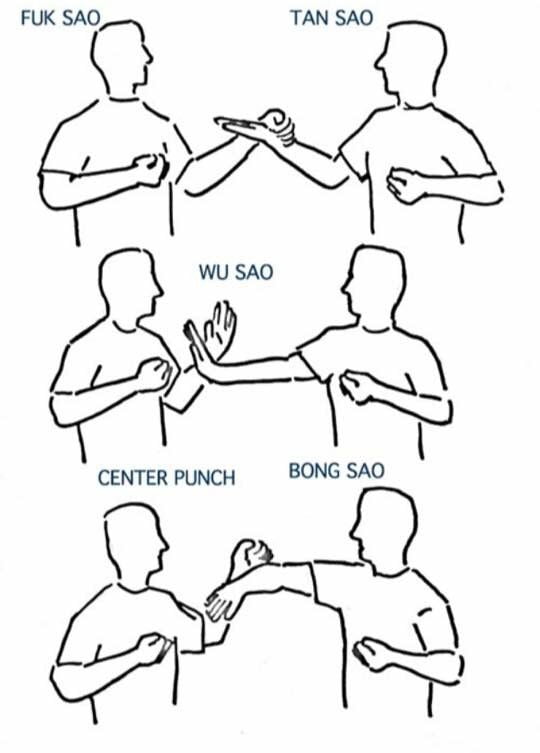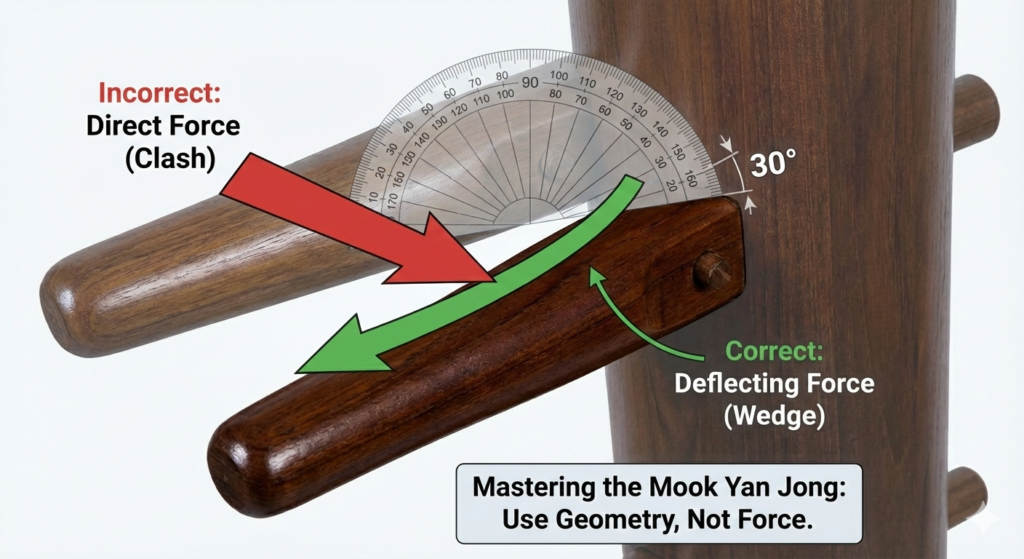Wing Chun is a traditional Chinese martial art that has garnered significant recognition for its emphasis on close-range combat, efficiency, and economy of movement.
Originating in Southern China, Wing Chun is believed to have been developed by the Buddhist nun Ng Mui and later popularized by legendary martial artists such as Ip Man and Bruce Lee.
This rich historical lineage contributes to its status as a respected and influential martial art form.
At its core, Wing Chun is designed to be practical and direct, focusing on principles that maximize effectiveness while minimizing wasted effort.
One of the foundational concepts in Wing Chun is the use of body structure to generate power and maintain balance.
This involves maintaining a stable stance, proper alignment of the body, and efficient use of energy.
By focusing on these elements, practitioners can deliver powerful strikes and deflect incoming attacks with minimal exertion.
Another key principle of Wing Chun is the concept of economy of movement.
This martial art seeks to eliminate unnecessary motions, allowing for quick, precise, and fluid techniques.
Practitioners are trained to use the shortest and most direct path to achieve their objectives, whether it is striking, blocking, or grappling.
This principle not only enhances combat effectiveness but also conserves energy, enabling practitioners to sustain their efforts over longer periods.
Balance is also a crucial aspect of Wing Chun practice.
Proper balance allows practitioners to maintain stability and control during combat.
Making it difficult for opponents to disrupt their stance or movements.
By honing their balance, practitioners can improve their ability to react swiftly and maintain composure under pressure.
In summary, the discipline of Wing Chun is built upon a foundation of historical significance, core principles of body structure, efficiency, and balance.
These elements collectively contribute to its effectiveness as a martial art, enabling practitioners to excel in close-range combat scenarios.

The Role of the Wooden Dummy in Wing Chun
The wooden dummy, known as Muk Yan Jong, is a traditional training apparatus in Wing Chun martial arts.
It serves as a vital tool for practitioners to refine their techniques.
Enhance timing, and develop an acute sense of distance and body structure.
The dummy’s design, featuring limbs and a trunk, allows students to simulate combat scenarios against an opponent.
Offering a safe and controlled environment to practice strikes, blocks, and footwork.
One of the primary benefits of using the wooden dummy is its role in helping practitioners achieve precision in their movements.
By repeatedly engaging with the dummy, students can correct their angles of attack and defense.
Ensuring that their techniques are both accurate and effective.
This repetitive practice also aids in muscle memory development, allowing movements to become second nature during actual combat situations.
Furthermore, the wooden dummy is instrumental in teaching proper timing.
The fixed position of the dummy’s limbs requires practitioners to adjust their timing and rhythm to execute techniques smoothly.
This adjustment fosters a heightened awareness of timing.
Which is crucial for both offensive and defensive maneuvers in Wing Chun.
In addition to timing, the wooden dummy helps develop a better sense of distance and spatial awareness.
Practicing with the dummy enables students to gauge the appropriate distance for various techniques.
Ensuring they can maintain effective range and control during an encounter.
This spatial understanding is essential for maintaining structure and balance, key components of Wing Chun’s defensive strategy.
However, it is a common misconception that the wooden dummy is indispensable for effective Wing Chun training.
While it undoubtedly offers numerous benefits, practitioners can still achieve significant progress without it.
Exercises focusing on body mechanics, partner drills, and solo forms can also contribute to a practitioner’s development.
Emphasizing that the core principles of Wing Chun can be cultivated through various methods.
Fundamental Wing Chun Stances and Postures
Wing Chun, a traditional Chinese martial art, places significant emphasis on developing a strong and stable body structure through its fundamental stances and postures.
One of the primary stances in Wing Chun is the Yee Jee Kim Yeung Ma, also known as the Character ‘Two’ Adduction Stance.
This stance is characterized by feet positioned shoulder-width apart, with toes pointing inward to form a slight angle.
Knees are bent and slightly turned inward, creating a stable base that aids in maintaining balance and distributing weight evenly across the body.
This stance trains practitioners to root themselves firmly to the ground, enhancing stability and the ability to absorb and redirect force.
Another essential stance in Wing Chun is the Bik Ma, or Pressing Stance.

This stance involves stepping forward with one foot while maintaining the structure of the Yee Jee Kim Yeung Ma.
The front knee is slightly bent, and the back leg is straight, creating a dynamic yet balanced position.
The Bik Ma stance is crucial for forward energy transfer, allowing practitioners to advance or retreat smoothly while maintaining balance and control.
By practicing this stance, individuals can improve their ability to generate power from the ground up and effectively channel it through their movements.
These stances can be practiced without a dummy by focusing on the correct alignment and positioning of the body.
Practitioners should pay attention to their posture.
Ensuring that the spine is straight and the shoulders are relaxed.
Regular practice of these stances helps develop muscle memory.

enabling practitioners to maintain stability and balance even in dynamic situations.
Additionally, incorporating slow, controlled movements while in these stances can further enhance one’s ability to transfer energy efficiently.
By mastering the fundamental stances and postures of Wing Chun.
Practitioners can build a solid foundation for their martial arts practice.
Leading to improved body structure and balance.
Solo Drills for Improving Balance and Structure
Practicing Wing Chun without a dummy can still significantly enhance your balance and body structure through a variety of solo drills.
These exercises focus on developing core stability, proper alignment, and fluid transitions.
One effective drill is shadow boxing, which allows you to simulate real combat scenarios.
When shadow boxing, emphasize maintaining a strong, rooted stance while executing punches and kicks.
This helps in reinforcing your balance and body structure.
Ensure that your movements are controlled and deliberate to avoid common mistakes such as overextending or losing your center of gravity.
Stance transitions are another critical drill for improving your Wing Chun practice.
Begin by standing in the basic Wing Chun stance, then gradually shift your weight from one leg to the other while maintaining your posture.
Practice moving from a neutral stance to a forward stance, and then back again.
This exercise not only improves balance but also enhances your ability to remain grounded during dynamic movements.
Pay attention to your foot placement and ensure that your knees are slightly bent to absorb any shifts in weight.
Slow-motion form practice is also essential for refining balance and structure.
By performing Wing Chun forms at a slower pace, you can focus on the intricacies of each movement.
This methodical approach allows you to identify and correct any imbalances or structural flaws.

Start with simple forms and gradually incorporate more complex sequences as you gain confidence.
Concentrate on maintaining a stable stance throughout each motion.
And avoid rushing through the forms, as doing so can lead to poor technique.
Incorporating these solo drills into your Wing Chun training routine will help build a solid foundation in balance and body structure.
Regular practice of shadow boxing, stance transitions, and slow-motion form practice will lead to significant improvements in your overall martial arts proficiency, even without the use of a training dummy.
Using Visualization Techniques
Visualization techniques play a pivotal role in Wing Chun practice.
Especially when traditional training tools like a wooden dummy are not available.
These techniques involve mentally simulating the presence of an opponent or a wooden dummy.
Enabling practitioners to practice their strikes, blocks, and movements with precision and intent.
Visualization aids in the development of muscle memory.
Which is crucial for executing techniques effectively in real-world scenarios.
One of the key benefits of visualization is the improvement of spatial awareness.
By imagining an opponent’s movements and positions, practitioners can better understand the dynamics of distance and timing.
This heightened spatial awareness translates into more accurate and effective responses during actual combat situations.
For instance, visualizing an opponent’s punch can help a practitioner preemptively position their arm for a block.
Thereby improving their defensive capabilities.
Additionally, visualization techniques help in reinforcing the correct body structure and balance.
which are fundamental aspects of Wing Chun.
By mentally rehearsing the mechanics of each movement.
practitioners can ensure that they maintain proper posture and alignment.
This mental rehearsal is particularly beneficial for solo practice.
as it allows individuals to focus on the finer details of their techniques without the distractions that can occur during partner drills.
To effectively utilize visualization, it is important to create a realistic and detailed mental image of the training scenario.
This includes imagining the physical characteristics of the opponent.
The speed and trajectory of their attacks, and the appropriate responses.
Over time, consistent practice of these visualization exercises can lead to significant improvements in technique execution, reaction time, and overall martial arts proficiency.
Incorporating visualization into regular training routines can compensate for the absence of a physical dummy or training partner, making it an invaluable tool for Wing Chun practitioners.
By leveraging the power of the mind, one can enhance their skills, maintain progress.
and continue to develop as a martial artist.
even in situations where traditional training resources are limited.
Breathing and Mindfulness in Wing Chun Practice

Proper breathing and mindfulness are integral components of Wing Chun training.
significantly contributing to the practitioner’s overall body structure and balance.
Effective breathing techniques not only enhance focus and relaxation but also facilitate the optimal flow of energy, or “chi,” throughout the body.
By mastering these techniques, Wing Chun practitioners can achieve a heightened state of awareness and control during their training sessions.
One fundamental breathing technique in Wing Chun is diaphragmatic breathing, often referred to as “belly breathing.”
This method involves inhaling deeply through the nose.
allowing the diaphragm to expand and the abdomen to rise.
followed by a slow exhale through the mouth.
Diaphragmatic breathing helps to calm the nervous system, reduce stress, and increase oxygen intake.
Which is crucial for maintaining endurance and concentration during practice.
Regular incorporation of this technique can lead to improved stamina and a more focused mind.
Mindfulness in Wing Chun practice is equally important.
As it enables practitioners to remain present and fully engaged in their movements.
By cultivating a mindful approach, individuals can better detect and correct imbalances in their posture and technique.
This heightened awareness aids in maintaining proper body alignment and structure.
Which are essential for executing precise and effective movements.
Mindfulness also fosters a deeper connection between the mind and body, enhancing overall coordination and fluidity.
Incorporating mindfulness meditation into Wing Chun training can further enhance these benefits.
Practitioners can set aside a few minutes before or after training sessions to engage in meditation, focusing on their breath and clearing their mind.
This practice not only prepares the mind for the physical demands of Wing Chun but also promotes mental clarity and emotional stability.
In conclusion, integrating proper breathing techniques and mindfulness into Wing Chun practice can significantly improve a practitioner’s body structure, balance, and overall performance.
By prioritizing these elements, individuals can achieve a more harmonious and effective training experience.
Partner Drills and Sparring Without a Dummy
Practicing Wing Chun without a dummy can be effectively achieved through various partner drills and sparring exercises.
These methods not only substitute for dummy training but also enhance sensitivity, reflexes, and structural integrity through live interaction.
One of the fundamental drills in this regard is Chi Sao, also known as Sticky Hands.
This exercise involves two practitioners maintaining constant contact with each other’s arms.
Working to develop a heightened sense of touch and reaction.
The goal is to feel and respond to the opponent’s movements.
Thereby improving one’s ability to maintain balance and structure under pressure.
Another essential drill is Lop Sao, or Grabbing Hands.
This exercise focuses on redirecting an opponent’s force and controlling their limbs.
By practicing Lop Sao, practitioners learn to manipulate their partner’s energy and maintain a strong, stable stance.
This drill is invaluable for developing the ability to control the centerline and execute techniques with precision and efficiency.
In addition to these drills, sparring sessions provide a dynamic environment where practitioners can apply their skills in real-time scenarios.
Sparring encourages adaptability and quick decision-making, as one must constantly adjust to the opponent’s movements and strategies.
This live interaction is crucial for honing reflexes and reinforcing proper body structure and balance.
While practicing with a partner, it is essential to maintain a neutral and composed mindset.

This focus ensures that movements remain fluid and controlled.
reventing the development of bad habits or unnecessary tension.
Moreover, regular feedback from a partner helps identify areas for improvement and refine techniques.
In summary, partner drills and sparring exercises offer a practical and effective alternative to traditional dummy training in Wing Chun.

By engaging in Chi Sao, Lop Sao, and sparring, practitioners can significantly enhance their sensitivity, reflexes, and structural integrity.
These practices foster a deeper understanding of Wing Chun principles and contribute to overall martial arts proficiency.
Progress Tracking and Continuous Improvement
Maintaining a structured approach in Wing Chun practice.
especially without the aid of a dummy, is crucial for continuous improvement.
One effective method is to keep a detailed training journal.
Documenting each session allows practitioners to reflect on their progress, note areas of difficulty.
And identify patterns in their performance.
A well-maintained journal should include specifics such as the techniques practiced, duration, perceived challenges, and any feedback received.
Setting specific, measurable goals is another essential strategy.
Goals provide clear direction and motivation.
For instance, one might aim to improve balance by practicing single-leg stances for a certain duration or to enhance body structure through repeated, focused practice of specific forms.
These objectives should be revisited regularly to assess progress and adjust as necessary.
Regular self-assessment is indispensable for monitoring improvement.
Practitioners can evaluate their technique and balance by recording their practice sessions and reviewing the footage.
This visual feedback can help in identifying subtle flaws in posture and movement that might be missed during practice.
Additionally, using mirrors during training can provide immediate visual cues to correct form and alignment.
Another valuable resource is feedback from instructors and peers.
Engaging with a community of practitioners allows for the exchange of insights and constructive criticism.
Instructors can offer expert guidance and help pinpoint areas needing improvement.
While peers can provide different perspectives and support.
Participating in group training sessions or workshops can also foster a collaborative learning environment.
By integrating these methods – maintaining a training journal, setting specific goals.
regularly assessing technique and balance, and seeking feedback –.
practitioners can ensure steady progress in their Wing Chun practice.
Even in the absence of a training dummy.
This structured approach not only helps in honing skills but also in maintaining motivation and achieving long-term improvement.
Let’s us know about your thoughts on “Wing Chun Without a Dummy practice”.







